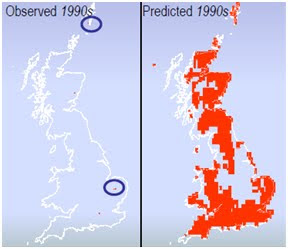I know this policy blog is meant to be about conservation, but may I briefly bring your attention to a law that was passed in one of the US states just a couple of days ago. This newly passed piece of legislation outlaws miscarriages. Yes, that’s right, miscarriages.1,2 This means that if you lose a child at any stage of development through natural (or unnatural) causes, you can be taken to court and possibly imprisoned. Nevermind that a high percentage of women lose children during pregnancy (one in four is what I’ve read), that this law sets out to attack those who are at a weak point in their lives (generally miscarriage is not considered to be fun), or that the state which passed this cannot even afford to educate the children they already have (just a few weeks ago they were considering cutting funding for the last year of school – too expensive, and what’s the point anyway?).2
This is an outright attack on half of their population, treating them as incubators instead of people and promoting dishonesty and bad medicine. After all, who will go to their GP to talk about pregnancy, to have tests, or to get advice? If the GP knows a patient is pregnant and she loses the child, she could go to prison. And what if you want to get an abortion? Those are still legal (only just), but if one is denied then there is little else a woman can do, especially frightening for younger women/girls who maybe can’t get out of the state so easily. And what the US really needs is more crazies out there in lynch mobs, thumping away on their bibles and promoting guns.
And one of the constant elephants in the room is, of course, population. So encouraging a state to have more children that they, and we, cannot afford seems to me just as illegal as miscarriage now is. However, population can become a sticky conversation very quickly, so I’ll leave you to make your own minds up about that topic.
I know this is a bit of me being outraged. I despise attacks on human rights, and I abhor stupid people who make rules in order to legalise discrimination. And I’m trying to work toward a safer, cleaner, more peaceful world. I’d like to ensure that ecosystems survive, with all their plants and animals, so that they can evolve and develop and do cool things. I’m working my butt off learning about sustainable agriculture, conservation planning, and ecosystem services, and keeping the planet viable in general.
For these people?
- emma
1 Google News: Utah miscarriage
2 http://www.huffingtonpost.com/rev-debra-haffner/criminal-miscarriage-or-m_b_478607.html - interestingly, written by a Revernd.
